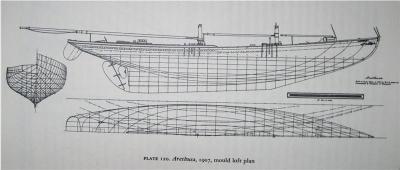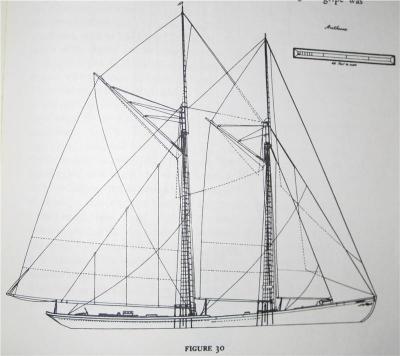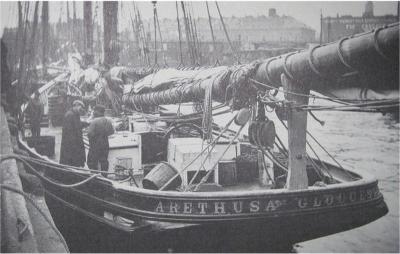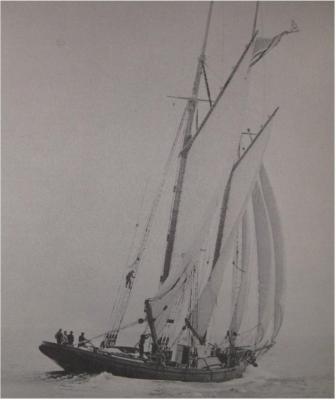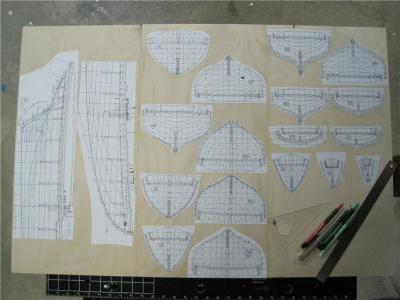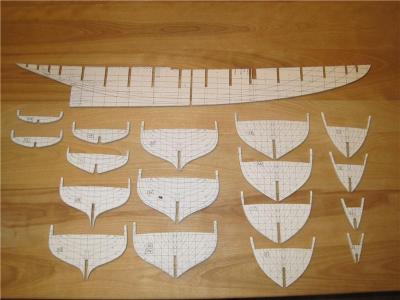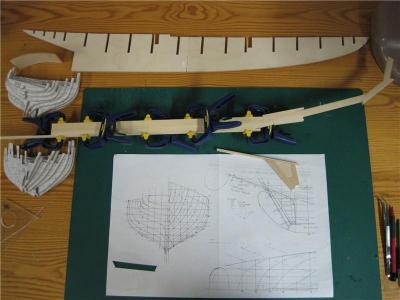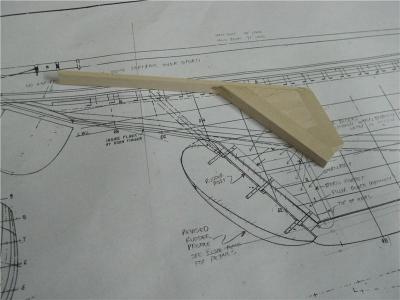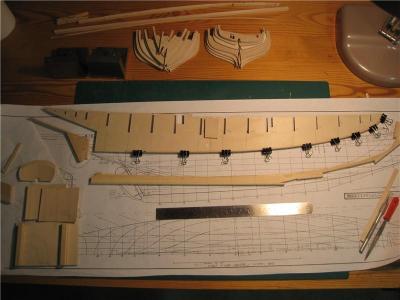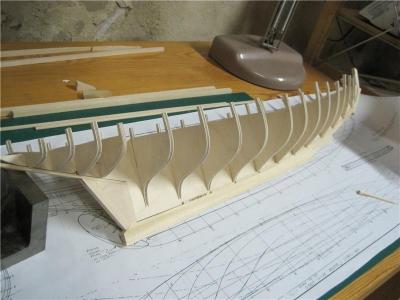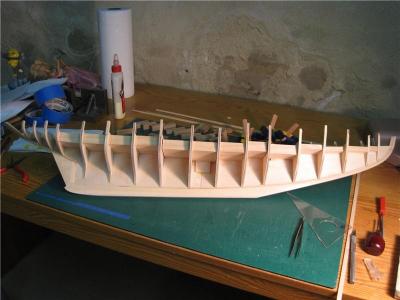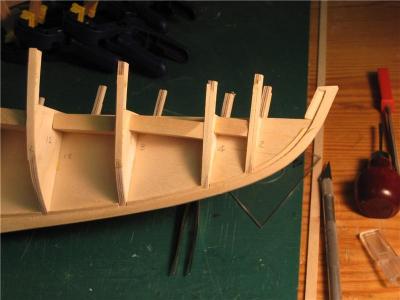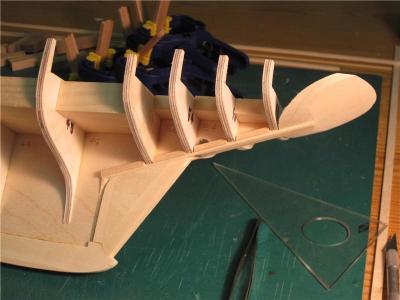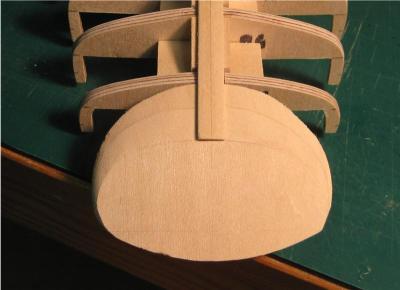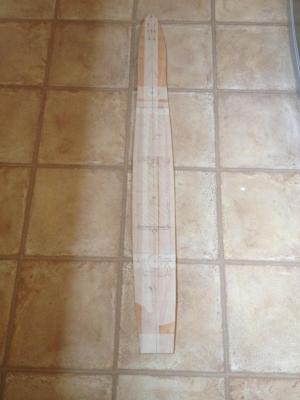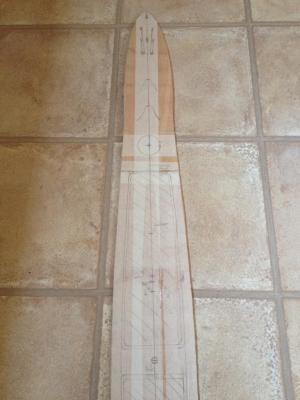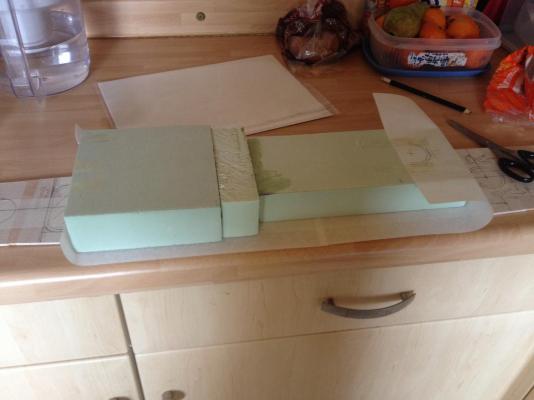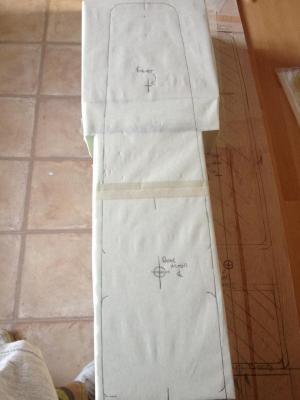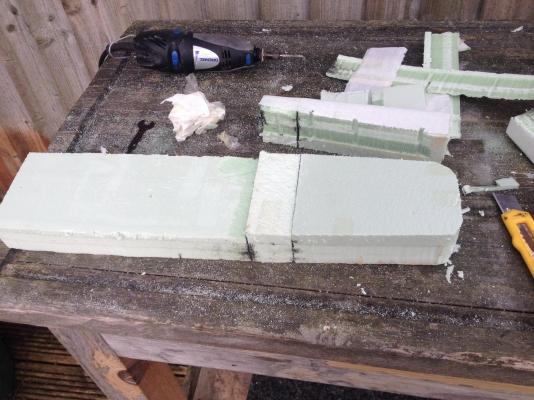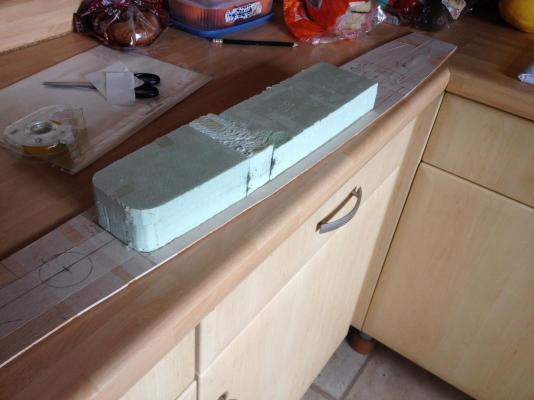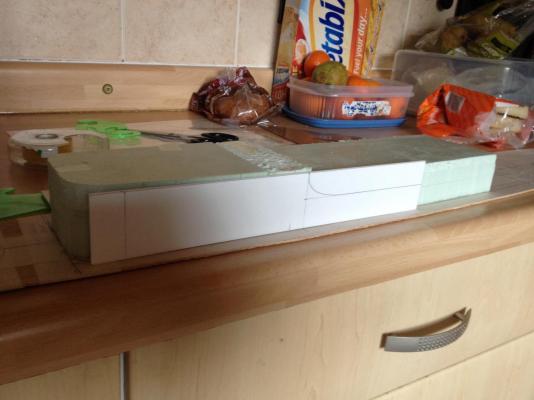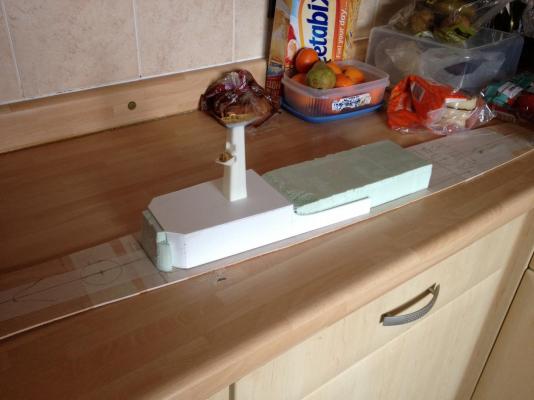Search the Community
Showing results for tags 'Arethusa'.
-
The build log reconstruction begins... It has been a long time since I’ve started a new sailing ship build, with my sailing ship model (Oneida) taking about 4 years to complete. Ever since building Smuggler, an 1870’s mackerel seiner from Gloucester, I’ve been smitten by 19th and 20th century American fishing schooners. There are a number builds, both in progress and completed, that have been inspiring to me – Bluenose builds, a couple of Ben Lathams, a scratch build of Columbia, and even a few of the “yachty” Americas. Jim Lefever, who’s impressive Benjamin Latham build was a great inspiration for me, provided me with a list of great reading references on American fishing schooners. After receiving a number of them as gifts, and reading through them, I knew my next build would have to be another fishing schooner. I have to admit right up front that Arethusa, an early 1900s fishing schooner and the topic of this build, was never called the “Goddess of Gloucester”. She was a goddess in Greek mythology. The schooner was named after one of Thomas McManus's daughters. I just thought that 'Goddess of Gloucester' fit to her will and made for a catchy name for this log. Arethusa, the schooner, was big, beautiful, and had a colorful history – sounds interesting to me. Enough about my motivations and ramblings….let’s get on with the ship. Arethusa was designed by Thomas F. McManus in 1907 and built by James and Tarr in Essex, Massachusetts, in 1909. She was what is termed a knockabout schooner. Unlike traditional schooners, with bowsprits (and jibbooms, and flying jibbooms), knockabout schooners had an extended bow and no bowsprit. The extended bow essentially placed the fore topmast stay at the same position as on a traditional schooner. With that configuration of stay location the crew wouldn’t be required to climb out on the typically poorly maintained footropes aside the bowsprit in order to perform tasks involving the sails and rigging. This was a Thomas McManus innovation, based on his observations and discussions with fisherman and owners, and was meant to reduce sailing crew injuries and deaths. I am using Howard I. Chapelle’s lines drawing and sail plan of Arethusa from his “American Fishing Schooners”, plate 120 and figure 30. “American Fishing Schooners” (AFS) has a great deal of detail in it’s appendix on most of the features of late 19th century and early 20th century schooners, and it is these I will use to build the details of the model. If anyone knows of more details about Arethusa I would be most grateful to learn of them. I have contacted Mystic Seaport Museum about their collection but found that while Arethusa is listed in their collection they don’t have any more information than that (little) which is shown in AFS. Following are some excerpts from “Thomas F. McManus and the American Fishing Schooners”, by W.M.P. Dunne, on Arethusa: James and Tarr “...completed her on 25 September 1907. Fifteen feet longer than the Pontiac, the Arethusa was, nevertheless, a deep, short ended knockabout, with the typically knuckled straight run of the keel (although with less drag), that Tom favored in this class, and more tumblehome. Once again he experimented with the rig. He stepped the foremast farther forward with the masts further apart. Right from the start, the big fisherman earned a reputation as a speedster. Captain Clayton Morrisey, the Arethusa’s first skipper waxed poetic: “She’s the slickest bit of wood that ever went down to Bay of Islands. Nothing can touch her and an eight-year-old girl’s little finger is stout enough to spin the wheel no matter how fresh it breezes.” “Can she sail?” exclaimed Captain Morrisey, opening his eyes as if he didn’t quite believe his ears. “Why, when we were coming up from the herring grounds she cut out her 13 knots an hour for six consecutive hours.” “We’d see a blotch of smoke away ahead on the horizon and in a little while would make out a tramp steamer bound our way. Pretty soon the Arethusa was kiting alongside the tramp and then we’d lose sight of her astern. She did that trick a number of times.” In fact, with Clayt Morrissey at the helm in 1912, the Arethusa would easily outrun the Canadian Dominion fisheries’ patrol steamer Fiona, “whose commander opined the Arethusa was violating the three-mile limit.” “At the beginning of 1921, soon after the new [prohibition] law was in place, Captain William F. “Bill” McCoy, a sometime Daytona Beach, Florida, boatbuilder, guided his fully-laden McManus schooner, the Henry L. Marshall, past the Tybee Lighthouse and up the river to Savannah, where, in the dark of the night, he discharged not fish, but 1,500 cases of illicit liquor. With the proceeds, McCoy replaced himself with a new skipper on board the Marshall and went to Gloucester in search of the boat of his dreams, Tom’s speedy Arethusa. Although McCoy had fished the Marshall legitimately until after the Eighteenth Amendment dried out the country, he had always thirsted for Arethusa. With Gloucester feeling the effect of postwar economic contraction, the owners of the fourteen-year-old schooner…..sold her to McCoy in April 1921. The Arethusa became a rum runner, a fast freighter of bootleg spirits. McCoy renamed her Tomoka, added a bowsprit so she could carry two jibs, jumbo and jib topsail-and a lot of liquor (she had the capacity of 6,000 cases of illegal alcohol). He brought the Tomoka to anchor just outside the then three mile limit of United States waters, but well within site of the beach. He soon began a thriving business with New York and New Jersey bootleggers…. “ [this is where the term ‘the real McCoy’ came from] Arethusa later returned to fishing, and was lost off Halifax in November 1929. Her particulars are: Designer Thomas F. McManus Builder Tarr and James Launch date 25 September 1907 Gross tonnage 157 tons Molded length at caprail of 127’ – 3” Molded beam 25’ – 0” Molded depth 13’ – 2” Registered dimensions 114.0’ x 25.6’ x 12.5’
-
Well here goes. HMS Arethusa was a type 12 Leander class frigate, laid down in Sept 1962. She was, like the rest of the Leanders, named after a figure of mythology. Arethusa was the last ship built by J.S. White & Company Shipbuilders of east Cowes, Isle Of Wight. launched on 5 November 1963 and commissioned on 24 November 1965. In 1967, Arethusa deployed to the Mediterranean. At the end of 1967 she was docked down for a repair period finishing in the spring of 1968. In the same year she took part in Portsmouth 'Navy Days'. After re dedication the ship worked up at Portland, later deploying to the Mediterranean. In 1969 Arethusa together with Juno, Hampshire and RFA Lyness visited Barbados, transited the Panama Canal and proceeded to Callao in Peru, Valparaiso, the Falkland Islands and Montevideo returning to the UK for Easter. Later in 1969 Arethusa was deployed as West Indies guard ship. Visits included Punta Del Garda, Bermuda, Washington DC, Norfolk Virginia, Key West, Anguilla, Antigua, St Lucia, Curaçao, St Kitts, Tortola, St Vincent, Carriacou, Nassau, Freeport Grand Bahama, transiting the Panama Canal again to San Diego and San Francisco; returning via the Panama Canal to Trinidad. She continued to Cartegena, Dominica, St Martin, Bequia, Georgetown, Belize, Fort Lauderdale arriving in Portsmouth in April 1970. Arethusa was guard ship for the hand-over of independence to British Guiana. In 1970, after visits to Lorient and Esbjerg, Arethusa deployed to the Far East via South Africa and her first Beira Patrol, While in the Far East she visited Penang, Singapore, Hong Kong, Nagoya, and the Philippines. On returning to Singapore she helped escort HM the Queen and HRH the Duke of Edinburgh on their South East Asian tour. In 1972, Arethusa undertook a further Beira Patrol which was designed to prevent oil reaching the landlocked country of Rhodesia via the then-Portuguese colony of Mozambique. The following year, Arethusa undertook a fishery protection patrol during the Second Cod War, and during that patrol was rammed by the Icelandic gunboat Odin. In 1973 Arethusa began her modernisation which included the removal of her one twin 4.5-in gun, with the Ikara anti-submarine warfare missile system taking its place. The modernisation was completed in April 1977. In that same year, Arethusa, like many Leanders, took part in the Royal Navy's Fleet Review in celebration of HM the Queen's Silver Jubilee. Arethusa was positioned between Cleopatra and Arrow and was part of the 3rd Frigate Squadron. In 1979, Arethusa deployed to the Far East and Pacific. In 1980 Arethusa underwent a refit that was completed the following year. She then joined Standing Naval Force Atlantic, a NATO multi-national squadron. In 1985, Arethusa was fitted with towed array sonar. On 4 April 1989, at Portsmouth, Arethusa decommissioned. She was eventually sunk as a target in 1991. I will be building the original batch 1 Arethusa on which my Dad served from new. My intention is to present this model to my Dad at the final HMS Arethusa reunion on the Isle of Wight in Oct 2015. This also marks the 50th year of her commission. ----------------------------------------------------------------------------------------------------------------------------------------------------------------------- My techniques may be alien to some, but I'm pretty much doing this off the top of my head. I usually mull things over In my sleep before having a go at it, so bear with me. So far I have the deck cut from ply and marked out in masking tape and pencil to give me a rough plan. I'm tackling the superstructure first. The lump is milled using a dremel from modelling foam to help give a more solid structure while forming the lower part. I've used 2mm thick styrene to form the sides and top, cut and heated to get the shape. I've been planning this since before Xmas and feel better now she's under way. More later.....
About us
Modelshipworld - Advancing Ship Modeling through Research
SSL Secured
Your security is important for us so this Website is SSL-Secured
NRG Mailing Address
Nautical Research Guild
237 South Lincoln Street
Westmont IL, 60559-1917
Model Ship World ® and the MSW logo are Registered Trademarks, and belong to the Nautical Research Guild (United States Patent and Trademark Office: No. 6,929,264 & No. 6,929,274, registered Dec. 20, 2022)
Helpful Links
About the NRG
If you enjoy building ship models that are historically accurate as well as beautiful, then The Nautical Research Guild (NRG) is just right for you.
The Guild is a non-profit educational organization whose mission is to “Advance Ship Modeling Through Research”. We provide support to our members in their efforts to raise the quality of their model ships.
The Nautical Research Guild has published our world-renowned quarterly magazine, The Nautical Research Journal, since 1955. The pages of the Journal are full of articles by accomplished ship modelers who show you how they create those exquisite details on their models, and by maritime historians who show you the correct details to build. The Journal is available in both print and digital editions. Go to the NRG web site (www.thenrg.org) to download a complimentary digital copy of the Journal. The NRG also publishes plan sets, books and compilations of back issues of the Journal and the former Ships in Scale and Model Ship Builder magazines.


